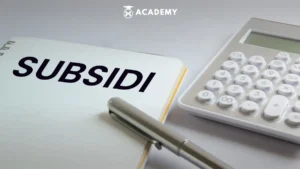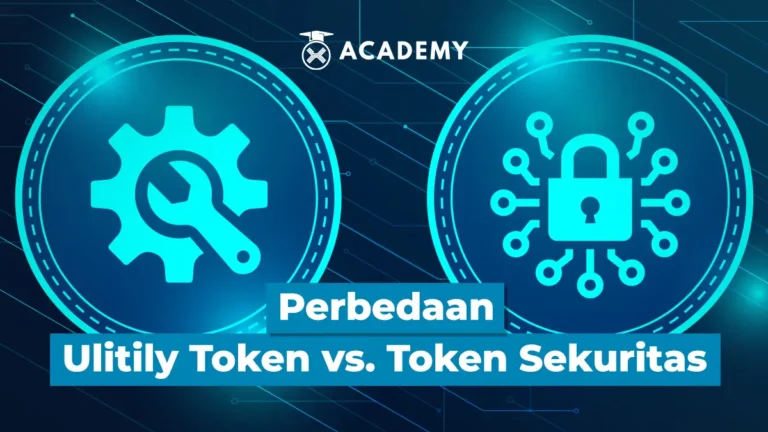In people’s daily lives, subsidies are a term that is commonly heard, especially during the last pandemic. At that time, the term subsidy existed when the government provided financial assistance to people in need. Subsidies can be financial assistance, goods, or special policies and have considerable benefits.
Meanwhile, in the crypto world, subsidies can refer to providing incentives or crypto tokens to users. This subsidy is a form of appreciation or support, often in the context of blockchain projects or decentralized applications (dApps). In this article, we will explain the relationship between subsidies and the crypto world and the impact of this.
So, to understand more about what subsidies are, the types of subsidies from the government, the benefits and drawbacks of subsidies, whether subsidies have positive and negative impacts, and examples of providing direct and indirect subsidies, see the full review below!
What are Subsidies?

Subsidies are financial assistance or support given to foundations, associations, companies, or households by the government or other organizations. This definition also varies according to the source.
According to the Big Indonesian Dictionary, subsidies are assistance with money or other resources given to foundations, associations, and so on, usually by the government. On the other hand, according to Milton H. Spencer and Orley M. Amos, Jr in their book Contemporary Economics, subsidies refer to payments provided by the government to companies or households to achieve certain targets. Meanwhile, subsidies in the economy are government actions aimed at reducing the price of a product or increasing spending to support the growth or sustainability of certain sectors.
Subsidies can take various forms, including direct and indirect assistance, as well as assistance in financial or in-kind forms. This assistance is provided to encourage these sectors so they can grow or survive in a competitive economic environment. Examples of subsidies that are commonly found include subsidies for fuel oil (BBM), education, electricity, agriculture, and health.
On the other hand, the main purpose of providing subsidies by the government is, among other things, to help reduce the price of goods or services below market prices, to support business actors by increasing their productivity, and as a form of protection for business actors amid an uncertain business climate.
Types of Subsidies from the Government
Explanation of the two types of subsidies from the government, namely direct and indirect subsidies, starting from consumption, production, export, and employment subsidies. Governments use various kinds of subsidies to achieve multiple economic and social goals. In this case, there are two main types of subsidies provided by the government, namely direct and indirect subsidies. The following is the explanation, namely:
1. Direct Subsidies
As the name suggests, direct subsidies are financial assistance provided directly to recipients. This type of subsidy involves paying money or funds to certain individuals, groups, or industries. In Indonesia, direct subsidies cover various programs, including direct cash assistance or BLT, Healthy Indonesia Card, and Smart Indonesia Card.
2. Indirect Subsidies
Meanwhile, indirect subsidies refer to assistance that is not provided directly to the recipient but rather through programs run by other parties. Even though this assistance is not provided directly to individuals or communities, they can still feel the benefits in the form of products or services at prices lower than market prices.
There are many examples of indirect subsidy assistance available to the community. Some of these include tax relief policies and subsidized gas distribution. Also, the Home Ownership Credit (KPR) home interest assistance program through banks and subsidized fertilizer distributed through State-Owned Enterprises (BUMN) include fertilizer subsidies to the community. With this indirect subsidy, people can still experience financial relief and access more affordable products or services.
Advantages and Disadvantages of Subsidies
From an economic perspective, the purpose of providing subsidies is to reduce the price of goods or services so that consumer spending can be reduced. Apart from that, there are several other advantages of providing subsidies, including:
- Lowering the price of goods or services: Subsidies help reduce the price of a product or service below normal levels, allowing consumers to obtain goods or services at a lower cost.
- Helping the poor: Providing subsidies to people experiencing poverty helps meet their daily needs. In this way, their economic conditions can improve gradually.
- Maintain purchasing power: Subsidies help maintain citizens’ purchasing power by making essential products or services more affordable, especially for low-income groups.
- Increasing competitive production: With subsidies, local producers can increase the production of goods and services that have higher competitiveness compared to imported products. This helps strengthen the domestic economic sector.
- Prevent bankruptcy of business actors: Subsidies can act as a protector for business actors who may feel insecure in doing business, especially during difficult economic conditions. With subsidies, the risk of bankruptcy can be minimized, providing stability to businesses and jobs.
Even though it has many advantages, subsidies are also seen as having disadvantages. Regarding this, several economists argue that subsidies are not a wise economic policy. Those who adhere to free market ideology argue that resource allocation should be given to parties who can manage them efficiently in free market conditions. Free market supporters also believe that subsidies will only open up opportunities for those who cannot manage resources to control those resources. As a result, this can lead to inefficiencies in resource use and allocation.
Do Subsidies Have Positive and Negative Impacts?
It is important to know that subsidies have positive and negative impacts on the economy and society. This happens because subsidies affect the dynamics of the economy and society in a complex way. The following are some positive and negative impacts of subsidies that you need to know, namely:
1. Positive Impact
- Improving the quality of the economy: Thoughtful subsidies can help improve the quality of a country’s economy by assisting sectors in need and encouraging overall economic growth.
- Helping low-income people: Subsidies can help low-income people meet their economic needs by making important goods and services more affordable.
- Prevention of corporate bankruptcy: Appropriately administered subsidies can prevent corporate bankruptcy, provide stability and continuity to businesses, and prevent job losses.
2. Negative Impact
- Inefficient allocation of resources: Subsidies can result in inefficient allocation of resources because consumers tend to consume subsidized goods wastefully, considering that the price of the product or service is lower than the market price.
- Price changes and ineffective subsidies: Large subsidies implemented primarily for political purposes often do not solve the core problem and can change market prices without providing a meaningful solution.
- Lack of appreciation from beneficiaries: Sometimes, subsidy beneficiaries do not fully appreciate the assistance provided, thereby reducing the expected positive impact of the subsidy.
- Disruption to markets and economic costs: Subsidies can disrupt natural markets and cause high financial expenses, especially if not managed well, causing economic distortions.
- Disadvantages to the private sector: Large and disproportionate subsidies can harm the private sector, stifling competition and hindering economic growth.
Examples of Direct and Indirect Subsidies
There are many examples of subsidies that the government has provided to people in various areas of need—for example, health subsidies, fuel, BLT, necessities, and the Healthy Indonesia Card.
Until now, there are various examples of subsidies that have been provided by the government or other institutions to people in need. In this type of direct subsidy, examples of the assistance supplied include:
- BLT (Direct Cash Assistance) Program: Direct cash assistance to individuals or families in need.
- BPUM (Micro Business Productive Assistance): Cash assistance or BLT given to Micro, Small, and Medium Enterprises (MSMEs) to support the sustainability of their businesses.
- Basic Food Packages in the Bansos (Social Assistance) Program: Basic food assistance is provided to families in need in the social assistance program.
- Subsidies for the Smart Indonesia Card Program: Financial assistance to support education costs through the Smart Indonesia Card program.
- Healthy Indonesia Card: Financial assistance or subsidized health services through the Healthy Indonesia Card.
Meanwhile, in the type of indirect subsidy, examples of assistance provided include:
- Subsidies for 3 KG LPG Gas and BBM (Fuel Oil): Price reductions for 3 KG LPG gas and fuel oil, making them more affordable for consumers.
- Tax Relief for Industrial Players: Some industries get tax relief to stimulate production and investment.
- Home Mortgage Interest Burden Reduction: Reduction of interest rates or other incentives on Home Ownership Credit (KPR) to help people purchase homes.
- Agricultural assistance in the form of Fertilizers and Seeds: Subsidies on fertilizers and seeds for farmers to increase agricultural production.
- Incentives on Electricity, Water, and Other Bills: Several incentives are provided to the community through reductions in electricity, water, and other service bills to reduce their economic burden.
Why Are There No Subsidies in the Crypto World?

It is important to know that crypto assets, such as Bitcoin, Ethereum, and others, operate outside the government subsidy system. This happens because crypto assets are decentralized. This means that crypto is not controlled or regulated by the government or central financial institutions, so it is not tied to the government’s monetary or fiscal policies, including subsidies.
As discussed previously, subsidies are financial support or assistance provided by the government to individuals, companies, or certain sectors in the form of cash, discounts, or other incentives. The objectives can be varied, for example, to encourage economic growth, overcome inequality, or support certain sectors.
Regarding this, it is also important to understand that the crypto world does not receive direct subsidies. This happens due to several factors, including the basic principle of crypto assets to provide financial freedom to individuals. Therefore, applying subsidies directly to cryptocurrencies could conflict with this principle because subsidies often involve government oversight and regulation that can limit financial freedom.
Apart from that, another factor is the lack of adequate infrastructure. It should be noted that even though crypto is becoming increasingly popular, the infrastructure for accepting and using crypto as a form of payment is still not as large as the infrastructure for conventional currencies. Some countries and regions may not have a sufficiently developed infrastructure to support the use of crypto in subsidy programs.
Profits from No Subsidies in the Crypto World
The absence of subsidies in the crypto world has several advantages that can impact the market and other related matters. Some of the advantages of not having subsidies in the crypto world are as follows:
1. More Efficient Market
Crypto markets that are not influenced by subsidies tend to be more efficient. Crypto prices reflect actual supply and demand without interference from governments or financial institutions. This allows the market to react quickly to changing economic conditions and generate fairer prices based on true market forces.
2. Greater Justice and Equality of Access
Crypto provides access to the global financial system to people who previously did not have access to conventional financial services. Without subsidies, fairness of access can be improved because there is no discrimination based on economic or social status. People from various backgrounds can access and use crypto without barriers.
3. Better Security
In the absence of subsidies, crypto users are more responsible for the safety and security of their funds. They must adopt best security practices, such as using secure crypto wallets and managing their private keys wisely. This can increase security awareness among crypto users themselves.
Conclusion
In conclusion, subsidies are financial assistance or support provided to foundations, associations, companies, or households by the government or other organizations. This definition also varies according to the source. Examples of subsidies that are commonly found include subsidies for fuel oil (BBM), education, electricity, agriculture, and health.
Meanwhile, the main objectives of providing subsidies by the government are, among other things, to help reduce the price of goods or services below market prices, to support business actors by increasing their productivity, and as a form of protection for business actors amid an uncertain business climate.
It is important to remember that although crypto has no direct relationship with subsidies at this time, there is huge potential for crypto technology to play a significant role in the development of subsidy programs in the future. With blockchain technology underlying crypto, there is a great opportunity to increase efficiency, transparency, and security in implementing subsidy programs. This means that by adopting blockchain technology, governments and institutions can optimize the allocation of subsidy funds more efficiently and measurably.
So, now you understand what subsidies are, the types of subsidies, and the benefits and positive and negative impacts. Furthermore, you can also read other interesting articles, such as the benefits of the creative economy and the differences between micro and macroeconomics on INDODAX Academy.
It is important to remember that INDODAX Academy is the ideal source of knowledge to explore the world of blockchain and crypto assets more deeply. By understanding the basic concepts regarding crypto assets, you will have sufficient skills to start investing in crypto with confidence through the official and trusted crypto asset buying and selling platform, namely INDODAX.
Let’s continue to increase your knowledge about crypto assets by reading articles on INDODAX Academy!








